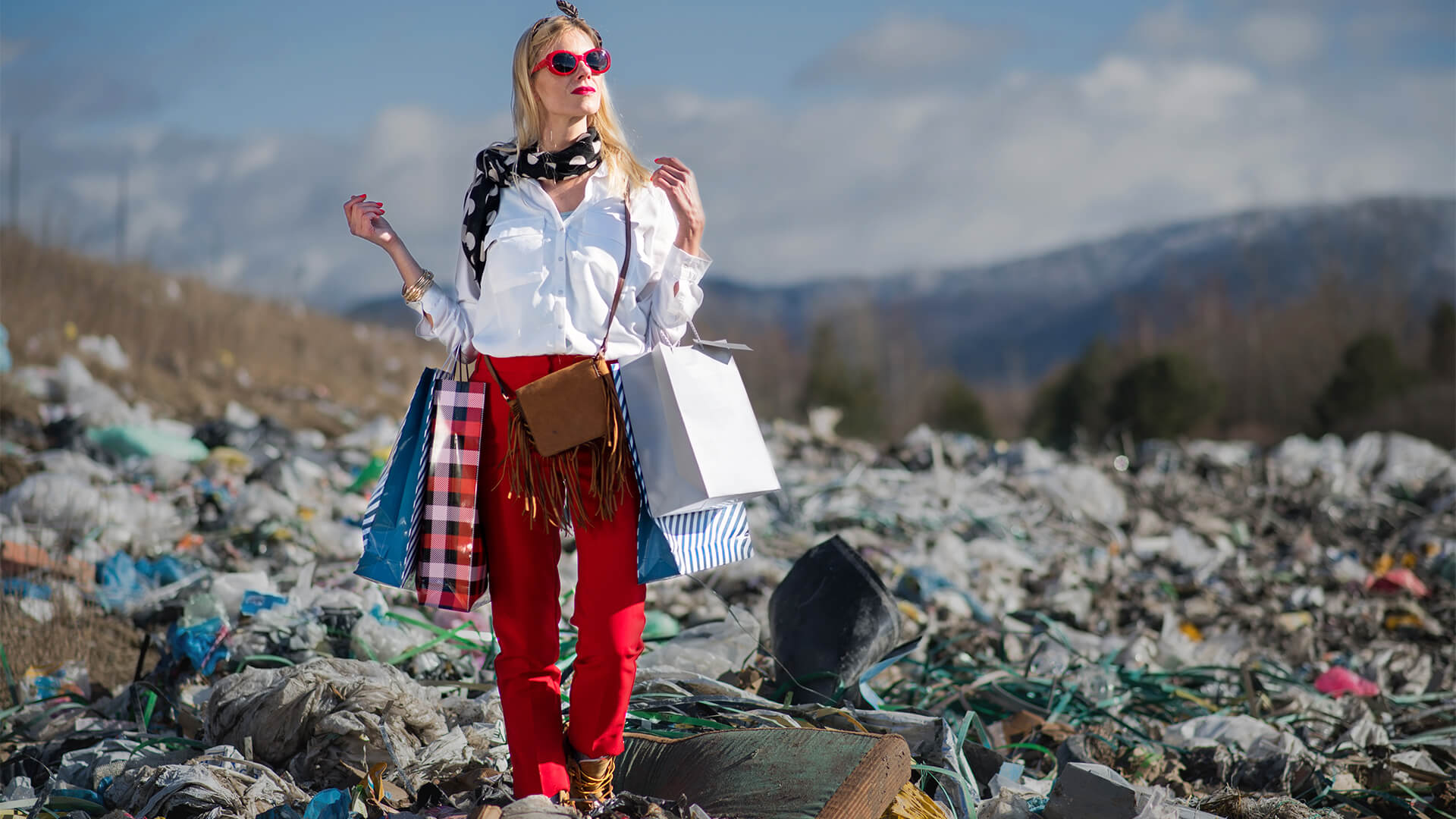The fashion industry has taken a substantial hit during the pandemic. The closure of non-essential stores and limitations on social interaction has created an impassive relationship between consumers, the retail sector, and the fashion industry. The Office for National Statistics reported that retail sales of clothing fell by 27 per cent in 2020 compared to the previous year. The impact of lockdown remains sharp. Even in January 2021, clothing retail sales were 84 per cent below the same month in 2020.
The pandemic has seen a reprioritisation of concerns for the nation. The unsustainable nature of our habits was revealed during the public health crisis. Waste and emissions were reduced by staying at home. There is still motivation to continue a reframed relationship with the planet after the pandemic. The products we use must be created through ethical and eco-friendly means.
Businesses have recognised this shift in consumer behaviour. Indexes reveal that 88 per cent of UK shoppers want brands to help them to be more sustainable. Meanwhile, 53 per cent of people say they feel better when buying products that are sustainably produced.
Now, the fashion industry must adapt to focus on their own sustainability to win back customers among stiff competition. Here we look at how the pandemic is helping the fashion industry to become more sustainable and what must be done to continue this essential journey.
Postage and plastic
The closure of non-essential retail stores has been a driving factor in the growth of online ordering and home delivery services in the fashion industry. However, handling and shipping processes for clothing often entails using an excessive amount of plastic. Most, if not all, of this plastic is thrown away.
Waste charity WRAP says that plastic packaging accounts for 70 per cent of the UK’s total plastic waste. Meanwhile, only four per cent of this waste is recycled.
Clothing ordered online will often arrive in polybags. This is a plastic that makes up around 34 per cent of the global plastic market and can take up to 1,000 years to decompose.
Sustainable alternatives are available. Paper and cardboard are the obvious choice for packaging. Their renewable source and biodegradability make them perfect for transport and shipping.
Another unusual alternative includes starch-based carrier bags. Made from potato starch, these bags have similar properties to their plastic counterpart. They offer similar protection to clothing. However, these bags usually break down within 12 weeks in composting conditions without any harmful residue left behind.
Cost is the real obstacle to a full acceptance of these alternatives. Polybags reflect a tiny fraction of the price of cardboard and other biodegradable materials. However, public attitudes towards sustainability may make these investments worthwhile for the fashion industry.
One consumer index suggests that 59 per cent of European consumers would pay more for an eco-friendly product. Offering sustainable packaging, even at a higher price, may persuade consumers to choose one fashion brand over another. Ultimately, the cost of these alternatives is a worthy price to pay to avoid the excessive plastic waste that the fashion industry currently creates.
The lasting impact of fast fashion
Fast fashion is more affordable, but the environmental impact is costing us more than its saves. The increasing production of clothing and the reducing lifespan of these garments is unsustainable. Less-quality materials and excessive production is contributing to a large carbon fashion footprint.
Since 2000, clothing production has doubled. Similarly, people are now buying 60 per cent more garments since then, but only keeping the clothes for half as long.
The main cause of this is an oversaturation of brand collections and a failing quality within the fashion industry. Most fashion companies would usually only offer two collections per year in 2000. Today, the likes of Zara and H&M produce 24 collections per year.
The use of plastic textiles also indicates a shift in quality. Polyester, for example, has genuine utility in the fashion industry. It avoids creases, increases durability, and prevents shrinkage. However, it can reduce comfortability and breathability. Importantly, it also reduces production costs.
The uses of polyester can be warranted in many circumstances. However, polyester can currently be found in about 60 per cent of all clothing. Meanwhile, it’s production produces up to three times more carbon emissions than cotton. Equally devastating, polyester does not break down in the ocean.
The pandemic has induced a slow down for the rampant nature of the fashion industry. Production has been slowed not only by working restrictions but by the decreased demand for clothing. Plus, recognising the environmental impact of low-cost and low-quality garments, people are now investing their money into more expensive but natural and quality clothing. Now, 25.4 per cent of Brits have said they wear their everyday items for over two years before buying new ones. Better still, 24 per cent of Brits have continued to wear an item of clothing for over ten years.
The fashion industry is not stalling because of the pandemic. It has failed to recognise that consumers don’t necessarily want cheaper clothing. Fashion businesses should invest in higher quality, biodegradable materials, which last longer and hurt the planet less.
A new opportunity
With the easing of restrictions over the coming year, the fashion industry is being presented with the opportunity to rethink its processes and business structures. The sector must now prove that their skills and vocations can be used to create a better planet and help their customers to become more sustainable.
Clothes are an essential part of everyday life. Consumers will recognise its importance once again when we begin to see more friends and get back to work. From what we’ll wear to the bar to our workwear clothing, our wardrobes are an extension of our personalities and culture. The same is true for the clothes that the fashion industry produces. Clothing should reflect a culture of sustainability, ethical manufacturing, and high quality.
It is these principles that have been uncovered by the pandemic that will force the fashion industry to accelerate its efforts in sustainability. Otherwise, businesses may find themselves stalling behind competitors that offer what the consumer is now demanding.
While the fashion industry should continue its campaign to persuade consumers to choose more sustainable garments, consumers should also make their demand for ethical and eco-friendly production known by supporting businesses that are leading the fight against the environmental crisis.


























